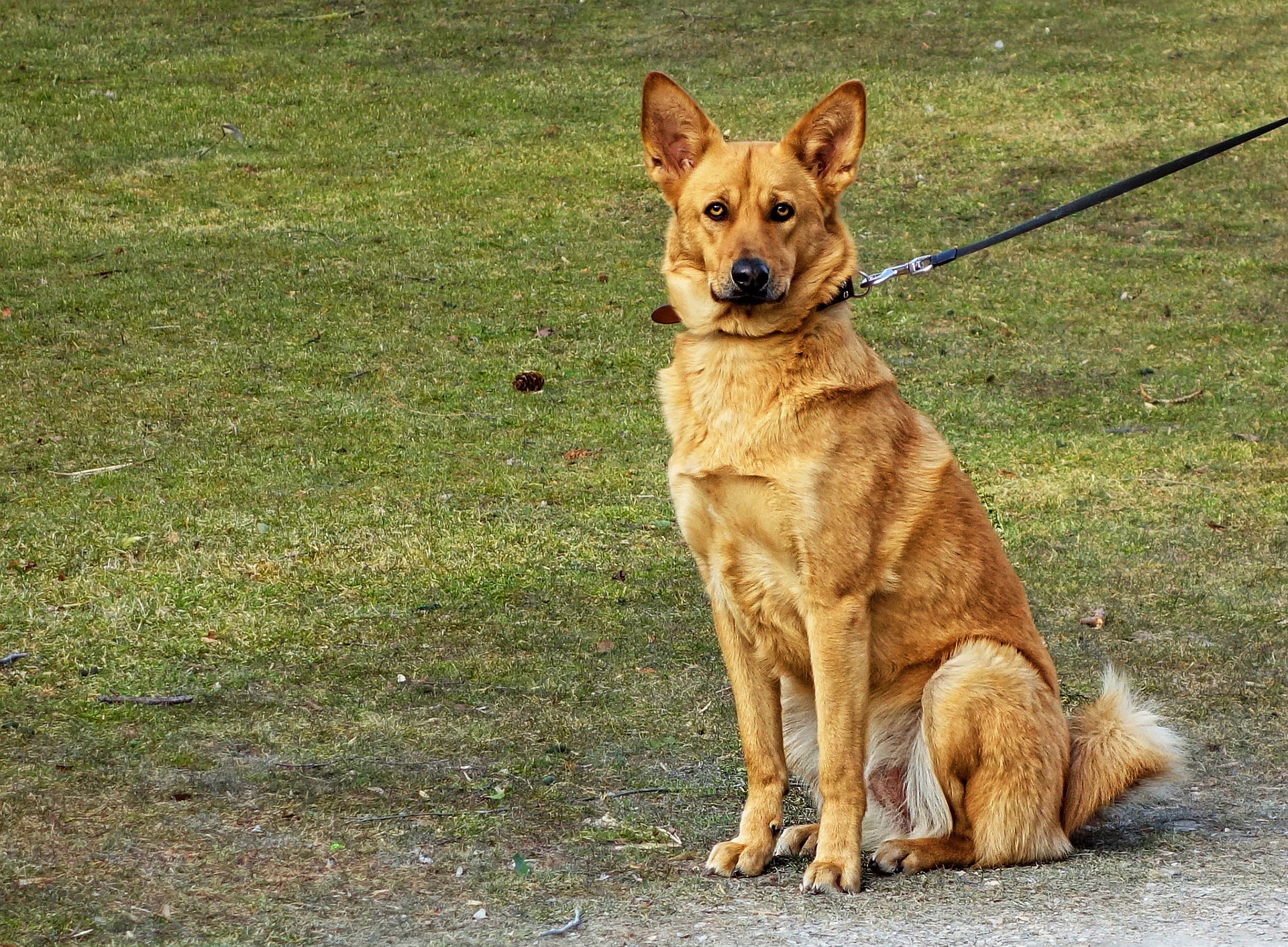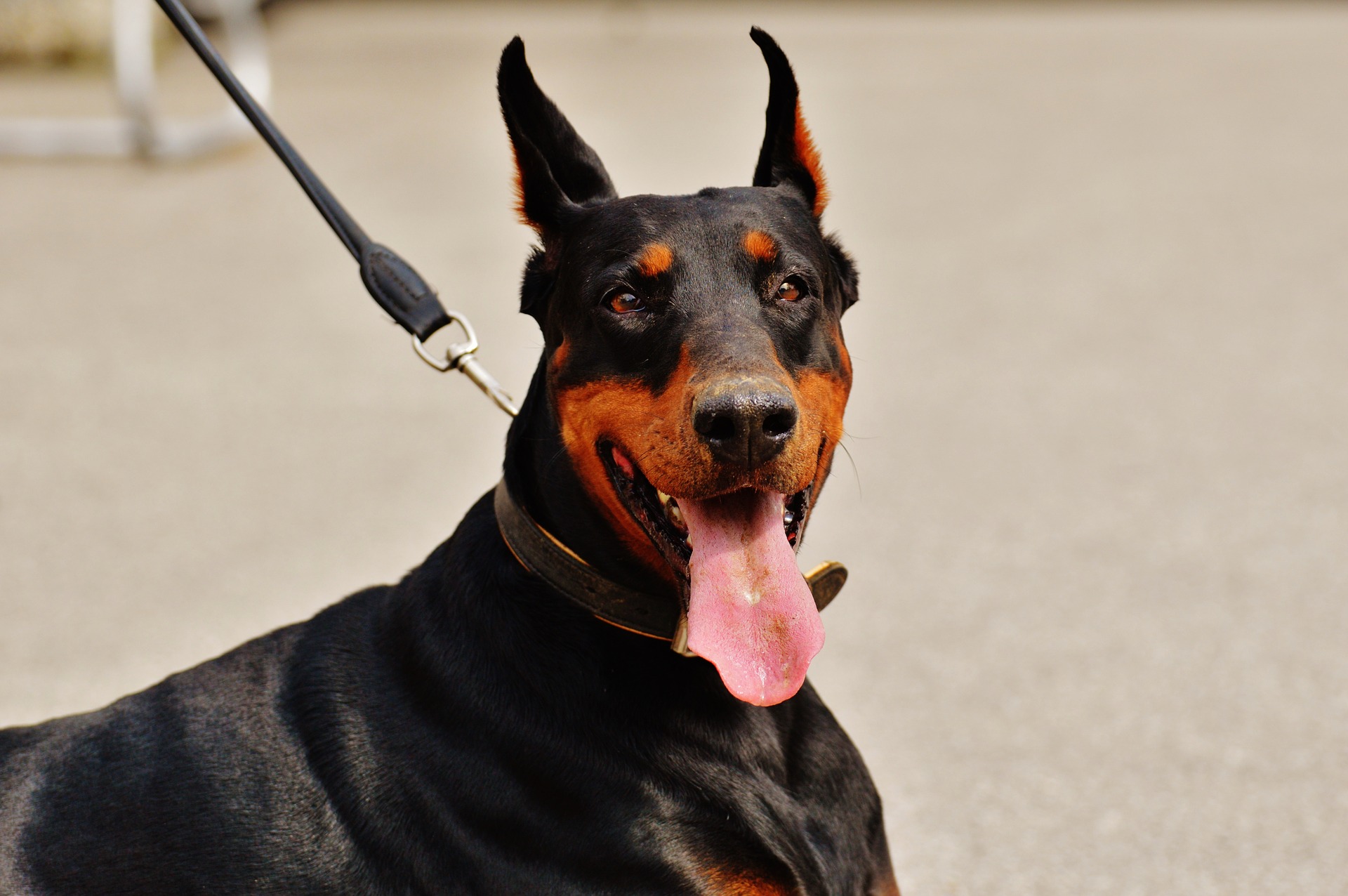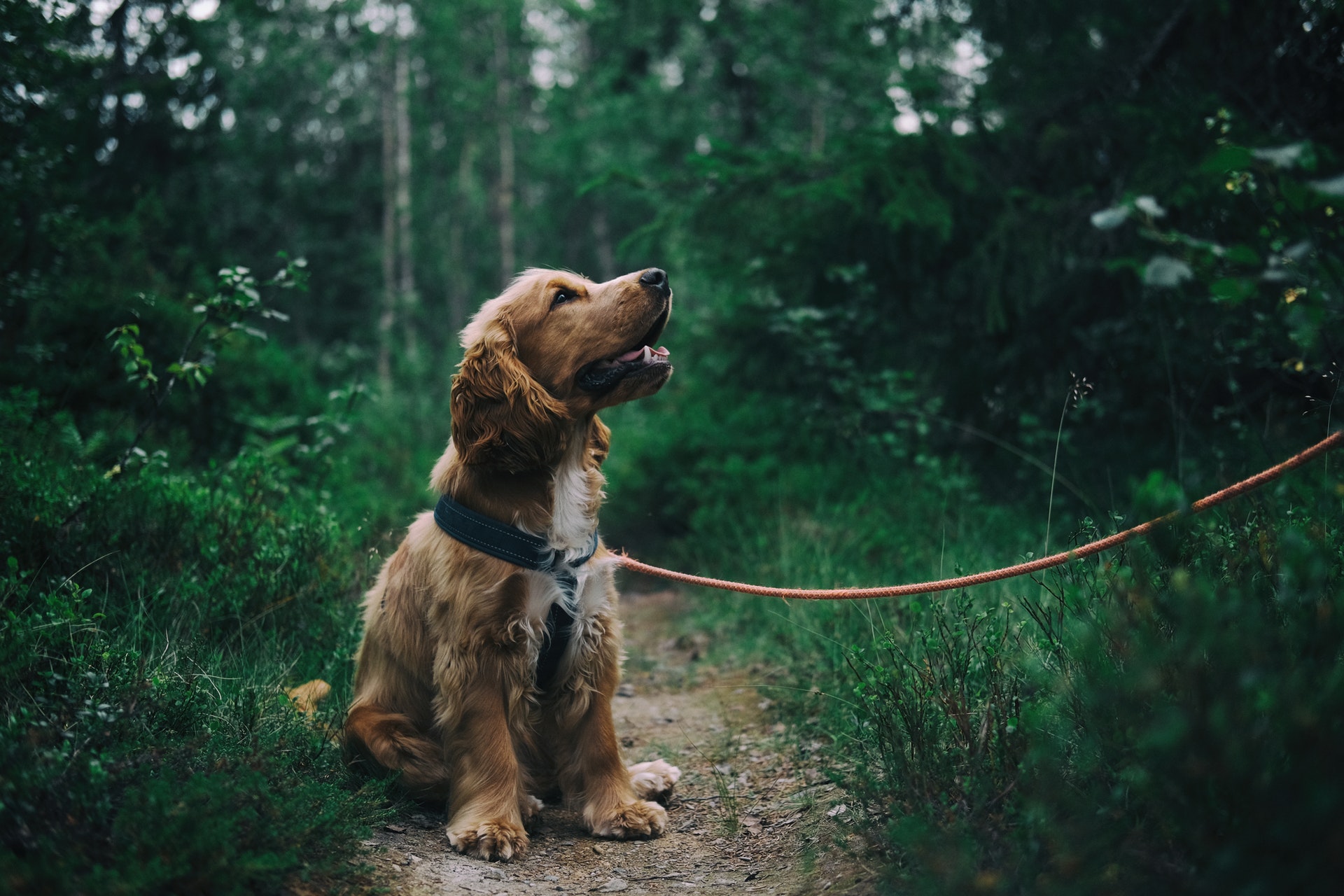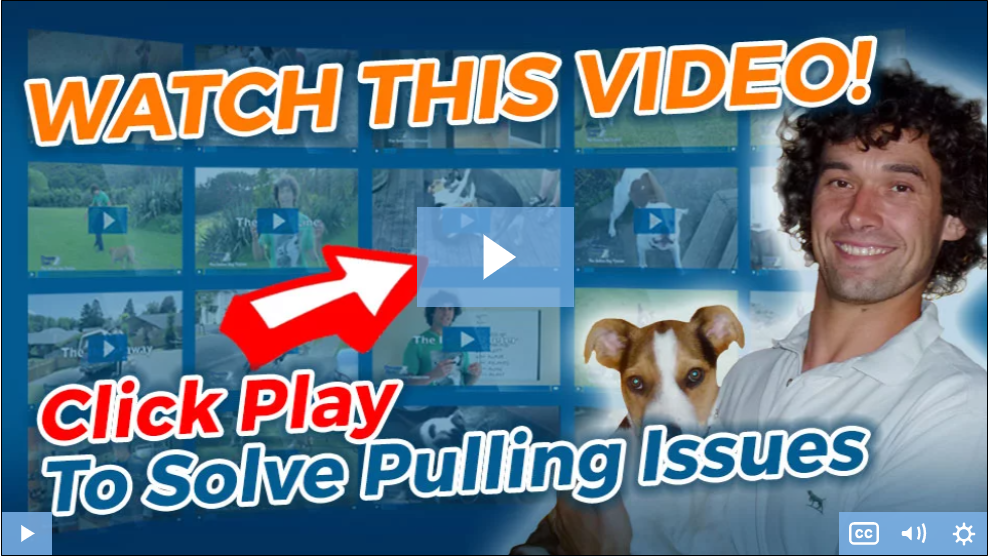If you’ve ever tried leash training a dog that pulls, you’ll know that every walk with your dog can feel like a tug of war.
But don’t worry, you’re not alone. In fact, Leash pulling is actually one of the most commons complaints among dog owners.
Which kind of makes sense if you think about it…
See, for most dogs, every walk is an adventure. There’s a world of sights to see, posts to sniff, cats to chase, and people to greet.
And when the outside world is that exciting, why wouldn’t they want to pack in as much as possible? And if that means dragging you along for the ride, so be it.
Unfortunately, most dogs don’t realize that their over-eagerness comes with some unpleasant consequences… and I’m not just talking about a sore arm.
A dog that routinely pulls on the leash can experience anything from hypothyroidism to nerve damage.
When the consequences are that serious, leash pulling isn’t something you should learn to grin and bear. It needs to stop, and the sooner it does, the better.
Fortunately, leash training a dog that pulls isn’t the impossible task you might imagine. With a few tips and tricks up your sleeve, you can teach your dog that it’s far more rewarding to walk on the leash than to pull on it.
WATCH VIDEO: Discover How To Quickly Leash Train ANY Dog Using 5 Step-By-Step Exercises That Has Your Dog Choosing To Obey You… Everytime!
(video will open in a new window)
Common Reasons Dogs Pull The Leash
If you want your dog to walk politely on the leash, you first need to understand why they’re pulling.
Even if the reason seems obvious (your dog wants to move faster than you), it’s rarely that simple. Some of the most common reasons dogs pull include:
They’ve Got Too Much Energy
If your dog’s been lazing around on the sofa all day, they’ve probably built up a ton of excess energy.
When they finally get the chance to release it, any thought of obeying commands or acting nicely goes straight out of the window.
They might register your command to ‘heel’, but they’ve got far too much energy to burn to actually do it.
Unless your dog has the self-control of a priest. Forget any chance of training them to walk on the leash until they’ve lost some of their steam.
They’ve Seen Something Interesting
No matter how old they get, some dogs never quite lose their childlike wonder of the world.
Regardless of how many cats, people, squirrels, or lampposts they meet and great on a daily basis, the sight of a new one is enough to make them go all a-quiver. And when that happens, you can kiss goodbye to their self-control.
If your dog walks calmly until they spot a ‘trigger’, make a note of what that trigger is. Any training that comes next will need to focus on teaching them to react calmly when they come across it.
They Don’t Know it’s Wrong
Believe it or not, dogs aren’t born with a moral compass that tells them how to behave in each and every situation.
If they want to get somewhere faster than you’re letting them, it’s logical for them to pull. They don’t know it’s the wrong thing to do – not if no one has ever taught them, anyway.
If a dog is new to wearing a leash or has never been trained in how to walk on one, they can’t be held responsible for disregarding that pressure on their neck and pulling for all their worth.
They’re Anxious
Not all dogs are confident and happy 100% of the time.
If a dog feels anxious or fearful during a walk. They’re likely to pull constantly out of a desire to get the hell away from where they are…
…Or because the increased pressure on their neck acts as a form of reassurance.
This might come from walking in an unfamiliar environment or a fear of the dogs or people they meet along the way.
They Don’t Like Their Leash
Retractable and rubber leashes might be all the rage, but they don’t suit all dogs.
Unlike other types of leashes, retractable and rubber leashes apply constant pressure to your dog’s neck. It’s not a lot, but it’s enough to make some dogs pull against it.
After a while of wearing one, they’re going to think that pulling on the leash is just the natural way to walk.


The Dangers Of Leash Training A Dog The Pulls
Leash pulling isn’t just frustrating. Left unchecked, it can become downright dangerous.
As well as posing a risk to you (tripping over when a dog makes a bolt for it), leash pulling can result in chronic or serious injury to your dog.
If you needed any further incentive to get on top of your dog’s leash pulling, take a look at some of these potential complications:
Collar Injuries
Collar related injuries are the most common consequence of excessive leash pulling.
The severity of the injuries can vary but will usually extend to bruises, cuts, and sores. Bone fractures are less common but not unknown.
Nervous System Damage
A dog’s neck is packed with nerves. As you can imagine, constant pressure on the neck isn’t going to do those nerves much good.
With repeated pressure over time, the nerves can eventually become damaged, leading to hyper-sensitivity in other parts of the body. Although any body part can be affected, most dogs will experience the effects in their legs and paws.
Vision Problems
Excess pressure on the neck over a prolonged period can send pressure shockwaves to a dog’s head, ears, and eyes.
The increased pressure in these areas can lead to circulation problems, which, in turn, can lead to sight and hearing difficulties. Particularly if the dog already has a pre-existing condition like glaucoma.
Hypothyroidism
You might not think leash pulling could end in a potentially lethal health condition, but prepare to be surprised.
The trauma of constant pulling can have a devastating effect on the thyroid gland, a small organ located directly on the part of the neck where a leash sits.
Inflammation of the gland is often the least of your worries. If the problem continues, the gland can eventually be destroyed, leading to skin problems, hair loss, and even organ failure.
Strangulation
Last but certainly not least, we come to the risk of choking and strangulation. While most of the problems we’ve seen happen over time, choking or strangulation is an immediate danger that shouldn’t be underestimated.
If a dog manages to pull hard enough to make you drop the leash, they run the risk of the leash wrapping around something and becoming stuck.
If that happens, your dog isn’t going to wait around to be rescued. They’re going to panic and try to break free.
In some cases, this can increase the pressure of the collar on their neck so much, it can stop their airflow or even break their neck.


How to Stop Leash Pulling
For some dogs, pulling on the leash is natural. But as we’ve already learned, even natural reactions can have dire consequences.
If you want to avoid those consequences, you’re going to need patience, consistency, and one or two of the following methods:
Invest in a New Leash
A retractable leash might seem a great way of keeping your dog under control while still allowing them a degree of freedom, but they don’t suit all dogs.
If the leash length is constantly changing, your dog will never learn just how much freedom they can actually get away with.
Unless your pooch already knows how to behave on a leash, stick to leashes with a fixed length of around 4 to 5 feet.
Don’t Reinforce Bad Behavior
When we give a dog what they want, we condone certain behaviors. The problem is, we don’t always know when we’re doing it.
If you want to avoid reinforcing unacceptable behavior, you’re going to have to get inside your dog’s head. Because trust me, a dog thinks very differently to me and you.
When your dog pulls the leash, you might think you’re tackling the problem by not speeding up. Your dog is pulling because they want you to walk faster. You’re refusing, so no reward for your dog… Right?
…Wrong.
Whether you’re speeding up or not, you’re still going to land up in the same place. And in your dog’s head, they’ve got there by pulling.
They don’t know they’d have gotten there just as easily by walking politely. Pulling, in this instance, has become the reward.
So, how do you stop it?
Simple – don’t play their game.
Whenever they start to pull, slam the brakes on. Stop walking and refuse to start until the tension has been released from the leash. Each time they make an attempt to start pulling again, stop.
It might turn a 20-minute walk to the store into a 3-hour marathon. But with time and consistency, they’ll eventually get the message that pulling doesn’t get them anywhere.
Reward Good Behaviors
Dogs respond to positive reinforcement. Fact.
If you want to reap the rewards of training sooner rather than later, positive reinforcement is the way to do it.
It might mean you have to spend a small fortune on treats, but if it spells the end of your daily tug of war, who’s going to complain?
Whenever you leave the house, make sure your pockets are packed with enough high-value rewards to feed a small army. Then, for each rewardable behavior your dog displays, toss them a treat.
Once they start to learn what gets them a treat and what gets them nothing, it won’t be too long before the 1st completely cancels out the 2nd.
Tone Down the Excitement
If you start each walk by clapping your hands and yelling out ‘who wants to go for walkies’? like a slightly demented elementary school teacher, stop.
Knowingly or not, you’re working your dog into a fever pitch of excitement. If there’s chaos and craziness before you’ve even stepped foot out of the house, you can’t expect your pooch to suddenly calm down and start trotting to heel once you hit the pavement.
Any trigger words like ‘walkies’ need to be dropped from your lexicon like a hot potato. It’s time to introduce some calm.
When it’s next time for a walk, pop a leash on your dog in silence. No conversation, no clapping, nothing.
Then, instead of heading out the door, walk them around the house for a few minutes. Take some time to do a few quick chores, encouraging your dog to sit while you do. Once they’re calm and composed, leave the house.
By putting a stop to all the pre-walk excitement, your dog will start each session calmer, quieter, and far more receptive to listening to your instructions than they’d be otherwise.
Take a look at the video below to see what this looks like in action…
Click Here To Visit The Online Dog Trainer And Learn How To Quickly Leash Train Any Dog…
Let Off Some Steam
If your dog’s got more fizz than a bottle of Gatorade, take time before each walk to burn off some of that excess energy.
A dog who’s already blown some steam playing fetch or frisbee in the garden will be far more inclined to walk sedately by your side than one who’s still bursting with energy.
Stay Consistent
If you’re not consistent, you’re not going to get anywhere.
Whatever technique you use, use it unfailingly. If you stop every time your dog pulls the leash one day but let them get away with it the next, they’ll have no idea what you’re trying to achieve.
Dogs respond to rules, but only if those same rules apply without exception. Relaxing the rules whenever you’re busy or tired will just put you back to square one.
You’re not going to see results straight away, so don’t expect to. And don’t take it as an excuse to give up.
Training a dog can be frustrating – there’s always going to be setbacks and days when you wonder if it’s worth it. But with perseverance and patience, you WILL get there.
Final Thoughts
Leash pulling can be hugely frustrating, but you don’t have to put up with it.
Buying a new leash, teaching your dog in areas with minimal distractions, exerting their energy before walks, reinforcing good behaviors, avoiding negative ones… with enough time, patience, and perseverance, all these little things will eventually pay big dividends.
Just remember that consistency is the key to success. If you don’t want to take two steps back for every one step forward, work out the rules, and stick to them. The reward of a dog who knows how to behave politely on a leash will make it all worthwhile.
WATCH VIDEO: Discover How To Quickly Leash Train ANY Dog Using 5 Step-By-Step Exercises That Has Your Dog Choosing To Obey You… Everytime!
(video will open in a new window)

